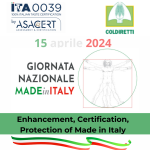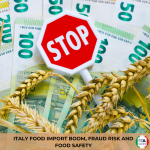It’s official, the Italian government has decided, at the proposal of the Ministers of Agriculture and Food Sovereignty Francesco Lollobrigida and Culture Gennaro Sangiuliano, to nominate the practice of Italian cuisine to the UNESCO Representative List of Intangible Cultural Heritage of Humanity for the current year. And the National Commission unanimously approved. The dossier will now be transmitted by the Ministry of Foreign Affairs to Unesco and the evaluation process will begin, which should be completed by December 2025.
Intangible cultural heritage is crucial in maintaining cultural diversity in the face of globalization. Its importance does not lie in the cultural manifestation itself, but in the wealth of knowledge and skills that are passed on from one generation to the next. Unesco does not protect the individual food, but rather the tradition that involves it. It is the rituality of a process that deserves inclusion in the intangible heritage of humanity, not the preparation of the food. For example, ‘the art of the Neapolitan pizza maker’ is protected, not the Neapolitan pizza.
It is stated in the application dossier that Italian cuisine is a set ‘of social practices, rituals and gestures based on the many local skills that, without hierarchies, identify and characterise it’. The country’s ‘cultural biodiversity’ is emphasised, with the common denominator of ‘conceiving the moment of preparing and consuming a meal at the table as an opportunity for sharing and discussion’. In Italy, cooking is ‘a way of taking care of family and friends, of patrons (when cooking in cultural spaces such as “trattorie” and “osteria”); it is the result of a continuous game of connections and exchanges that from previous generations reaches the new ones. It is a manifestation of sustainable creativity both from an environmental point of view (because it is based on not wasting anything and reusing leftovers) and from an economic point of view (because it is based on poor, seasonal ingredients) and a social point of view (because it aims to include all diversity)’.
Italian cuisine is the main vehicle for promoting our country. An initiative that involves the 60 million Italian citizens and, above all, the 70 million compatriots living abroad, as well as foreign admirers of the Made in Italy lifestyle and food style.
Italian cuisine is the main vehicle for promoting our country. An initiative that involves the 60 million Italian citizens and, above all, the 70 million compatriots living abroad, as well as foreign admirers of the Made in Italy lifestyle and food style.
“The food and wine heritage is an essential part of the Italian cultural landscape. This is important news, that of the candidature of Italian cuisine to Unesco. I would say that I cannot see, in full respect of all the cuisines of the world, a more deserved candidacy. – The comment of Fabrizio Capaccioli, CEO of Asacert and creator of the ITA0039 Certification Protocol – Our wine and food production and the Italian restaurateurs who act as their spokesman abroad, represent an extraordinary vehicle for the Italian brand. Initiatives of this kind are therefore welcome, but they must go hand in hand with a convincing relaunch of the protection of the Made in Italy sector in the Italian catering sector outside Italy. The road taken is the right one. – Capaccioli concludes – We are confident.”
Italian food is a characterizing factor in the tourist image of our country, capable of generating a strong desire that translates into motivation for Italian and foreign tourists and visitors to travel and experience food and wine, to purchase and consume Made in Italy products.
ITA0039 by ASACERT knows that food is an integral part of the Italian cultural heritage. A deep bond with the history and traditions of our territories.
If the Made in Italy products bought in the world were all truly Italian, agri-food exports would triple their current value. Unfortunately, outside Italian borders, six out of ten food products passed off as Made in Italy are actually FAKE. The global impact of the phenomenon is growing by 70% in the last ten years, also driven by the Russian-Ukrainian war, which imposes restrictions and embargoes on trade. From Russia, through our free ITA0039 App, we have been notified of ‘Casa Italia’ mozzarella, ‘Buona Italia’ Robiola salad, and even mortadella Milano.
The effective certification system developed by ASACERT technicians is the result of the deliberate simplicity and transparency of the process. All Italian restaurants around the world can apply to be certified and use the ITA0039 | 100% Italian Taste Certification mark. The process to become part of the Network is very effective in its simplicity: the process begins with a spontaneous request from the interested restaurateur, followed by an interview to assess the feasibility of the audit. The inspection takes into account various aspects including menu, wine list, staff, space dedicated to the promotion of Italian products, and last but not least the eco-sustainability criteria of packaging, for example. At the end of the process, the calculation of the achieved score is processed, with the attribution of the due certification rating. Certification is not issued if, for example, the presence of Italian Sounding products (e.g. ‘Borgonzola’, ‘Fontiago’, etc.) is detected during inspection.
The Government’s initiative comes, it is worth remembering, at a time when Made in Italy agrifood exports in the world have reached a historic record value of 60.7 billion, also driven by the demand for Italian cuisine.






